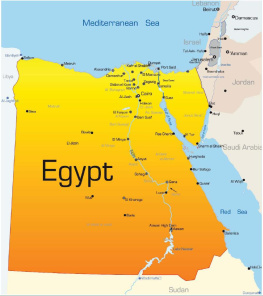ROUTLEDGE LIBRARY EDITIONS: EGYPT
THE TRANSFORMATION OF EGYPT
THE TRANSFORMATION OF EGYPT
MARK N. COOPER
Volume 12
First published 1982
This edition first published in 2013
by Routledge
2 Park Square, Milton Park, Abingdon, Oxon, OX14 4RN
Simultaneously published in the USA and Canada
by Routledge
711 Third Avenue, New York, NY 10017
Routledge is an imprint of the Taylor & Francis Group, an informa business
1982 Mark Neal Cooper
All rights reserved. No part of this book may be reprinted or reproduced or utilised in any form or by any electronic, mechanical, or other means, now known or hereafter invented, including photocopying and recording, or in any information storage or retrieval system, without permission in writing from the publishers.
Trademark notice: Product or corporate names may be trademarks or registered trademarks, and are used only for identification and explanation without intent to infringe.
British Library Cataloguing in Publication Data
A catalogue record for this book is available from the British Library
ISBN: 978-0-415-63747-3 (Set)
eISBN: 978-0-203-07914-0 (Set)
ISBN: 978-0-415-81127-9 (Volume 12)
eISBN: 978-0-203-07034-5 (Volume 12)
Publisher's Note
The publisher has gone to great lengths to ensure the quality of this reprint but points out that some imperfections in the original copies may be apparent.
Disclaimer
The publisher has made every effort to trace copyright holders and would welcome correspondence from those they have been unable to trace.
The Transformation of Egypt
Mark N. Cooper
1982 Mark Neal Cooper
Croom Helm Ltd, 2-10 St John's Road, London SW11
British Library Cataloguing in PUblication Data
Cooper, Mark Neal
The transformation of Egypt : state and state
capitalism in crisis, 1967-1977.
1. EgyptEconomic conditions1952
2. EgyptPolitics and government1970
I. Title
330.962'053 HC535
ISBN 0-7099-0721-4
Printed and bound in Great Britain
by Billing and Sons Limited
Guildford, London, Oxford, Worcester
CONTENTS
TABLES
FIGURES
To Carol
ACKNOWLEDGEMENTS
My field research in Egypt was funded by a Fulbright-Hayes Doctoral Research Abroad Fellowship and aided by affiliations with the American Research Center in Egypt and the American University in Cairo. A number of forums have provided comments and stimulation for parts of this work. Parts of were presented at the Yale Political Union under the title The Domestic Origins of Sadat's Peace Initiative. The comments and criticism of the readers and audiences in each of these forums have undoubtedly improved the quality of this work immeasurably.
I owe special thanks to Juan Linz whose guidance over five years has made this project possible.
INTRODUCTION
This book spans a period of dramatic change in modem Egypt. The ten years from 1967 to 1977 were punctuated by two massive popular demonstrations. On 910 June 1967 several million people poured into the streets to call Nasser back to power after he had resigned in the wake of Egypt's defeat in the June 1967 war. On 1920 January 1977 several hundred thousand people poured into the streets in an effort to put Sadat out of power after the government had tried to raise the prices of basic consumer goods. In the decade between these two events, Egypt underwent a major transformation. Politically, in June 1967 it was a single party authoritarian state; by January 1977 it was, at least nominally, semi-parliamentarian with a limited number of parties. Economically, in June 1967 it was strongly etatist and essentially closed, dominated by an inefficient public sector; by January 1977 it was partially open, characterized by high-powered private profiteering and international financial difficulties.
The decade is also marked by two dramatic international events: the Middle East War of June 1967 and Sadat's Mission of Peace to Jerusalem of November 1977. Here, too, the transformation is stunning. This book deals with the causes of the internal transformation and the concomitant international transformation. In the Middle East the interaction between the nations of the area and the involvement of the super-powers is so intense that observers tend to look to geo-politics as the predictor of international events. However, this book shows that internal factors are at least as important a cause of international manoeuvres. It is argued that the crisis of the etatist regime in the mid-1960s was a critical factor in causing the 1967 war and a crisis of the semi-liberal regime in the mid-1970s was a critical factor in causing the intensive efforts to achieve peace in 1977. Only by understanding the nature of both regimes, the dynamics of their crises and the links between them can we begin to understand the startling change that occurred in international events.
The period of this study is also marked by two dramatic deaths in Egypt. In late 1970, Nasser died from a heart attack after trying to negotiate peace between the Jordanians and the Palestinians. At his funeral, millions of Egyptians carried his coffin through the streets of Cairo in emotional, anguished mourning. In late 1981, Sadat wasassassinated soon after meeting with the President of the United States, a meeting which was part of the process of making peace between Egypt and Israel. At Sadat's funeral, less than a thousand foreign dignitaries marched in silent procession behind his coffin, while all of Egypt remained silent under a state of martial law. Here too the contrast and transformation are striking.
While it is clear that, to a considerable degree, a heart attack and an assassination are random events, one must not discount systematic factors that were associated with each event. It has been said of Nasser that as leader of the Arab world he worked himself to death trying to end the hostilities between two Arab nations. Because this book stresses the importance of domestic Egyptian factors in creating both internal and external crises, it must be recognized that the political economy created the pressures which seem to have undermined his health. In a similar vein, this book argues that the possibility that Sadat would be the target of violence was dramatically increased because he broke with the Arab world and because he failed to improve significantly either the political or economic lot of Egypt by doing so. Both his break with the Arab world and his inability to provide progress were caused by the weakness of the semi-liberal political economy which he had helped to create. In short, even events which depend in large measure on chance have their structural grounding because systemic factors can significantly raise or lower the probability that they will take place. Again, the critical point of origin for understanding such events lies in an understanding of the domestic political economy in particular an understanding of the strengths and weaknesses of that political economy.
More important than an understanding of any of these spectacular, headline events is a proper understanding of Egypt. Because Egypt is a complex nation at the centre of geopolitics, a quick caricature drawn at a moment of high tension is often used in place of a balanced, indepth characterization. Such a detailed characterization is the goal of this book and it is formulated on the basis of the belief that the transformation of the political economy was of major importance, not only for the personal fates of the two leaders and for the international situation in the Middle East, but also for the daily lives of the Egyptian people. It may very well be that neither the etatist nor the semi-liberal political economies could have provided a solution to Egypt's complex and formidable problems, but there is a world of difference between the two and traditional explanations have had difficulty accounting for the transformation from one to the other and have underestimated the differences between them.










